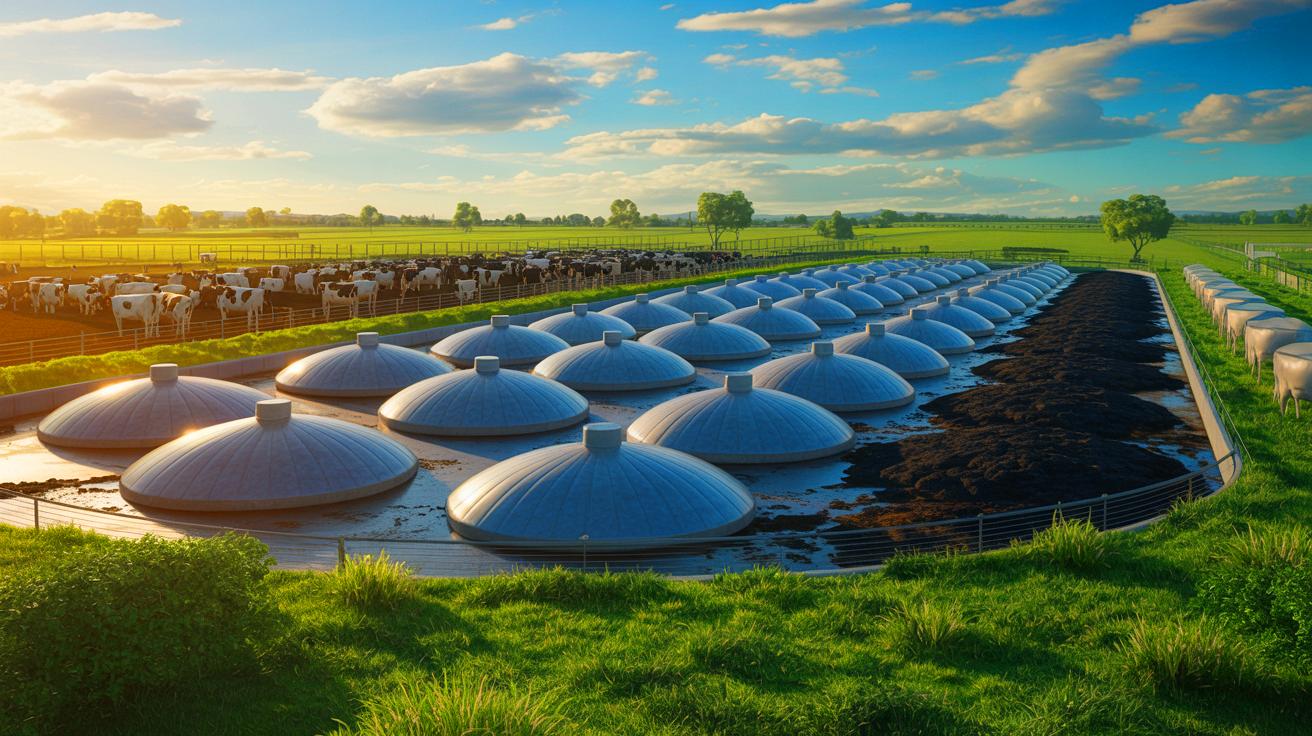- 🌍 Researchers from the University of California, Riverside, discovered that dairy digesters can reduce methane emissions by 80%.
- 🚜 The study utilized advanced gas sensors to monitor emissions on a Tulare County dairy farm after implementing a digester.
- 💡 Dairy digesters work by capturing methane from manure pits, converting it to renewable fuel.
- 🔍 California is expanding its ability to detect emissions using satellite technology, complementing ground-based efforts.
The fight against climate change requires innovative solutions, and California dairy farms are at the forefront of this battle with the implementation of dairy digesters. These advanced systems capture methane emissions from manure, significantly reducing greenhouse gases. Methane, a potent greenhouse gas, accelerates global warming much faster than carbon dioxide. A recent study by the University of California, Riverside, highlights the impressive capabilities of digesters, showcasing an 80% reduction in methane emissions on a Tulare County dairy farm. This achievement underscores the importance of technological advancements in agriculture and sets a benchmark for other states and countries to follow.
Real-world Test Confirms Promising Tech
In Tulare County, known for its high milk production, researchers conducted a real-world test of dairy digesters. They equipped a van with sophisticated gas sensors to monitor methane levels before and after the installation of a digester in 2021. Over two years, hundreds of data points were collected, providing a comprehensive overview of the digester’s effectiveness. Initially, the system faced some challenges, including leaks. However, through a collaborative effort between the research team, California Bioenergy, and the farm owner, these issues were addressed. This partnership exemplifies how adaptive management can lead to significant environmental benefits. The adjustments made led to a sharp decrease in emissions, proving the efficacy of this technology.
How Digesters Work
Dairy digesters operate by covering manure pits with gas-tight membranes, preventing methane release. The trapped methane is then purified and converted into fuel, often used to power vehicles that traditionally run on diesel. This dual-purpose approach not only curtails emissions but also provides a renewable energy source. Although the technology is highly effective, it is not without challenges. Digesters can occasionally leak, but with proper construction and management, emissions can be drastically reduced. This was evident in the Tulare County project, where careful oversight led to remarkable success.
Limitations
Despite their benefits, digesters are not a comprehensive solution to agricultural emissions. They do not address other pollutants such as ammonia or fine particles that impact air quality. Moreover, the implementation of a digester requires significant investment, permits, and commitment. For smaller farms, the costs may outweigh the benefits, making it an impractical option. However, for larger dairies, digesters offer a cost-effective strategy to mitigate greenhouse gas emissions. Francesca Hopkins, a climate change scientist, emphasizes that while digesters aren’t suitable for every farm, they are a crucial tool for those that can afford the investment.
Monitoring from the Sky
California is enhancing its capabilities to monitor methane emissions using satellite technology. These satellites provide a comprehensive view of emissions across vast areas, enabling swift identification and response to methane leaks. This technological advancement complements ground-based efforts like those in Tulare County, providing a multi-faceted approach to emission control. Hopkins views the project as a testament to successful collaboration in the climate sector. The study, published in Global Change Biology Bioenergy, highlights the potential for cooperation and innovation to produce tangible environmental benefits.
The use of dairy digesters in California represents a significant step forward in the reduction of methane emissions from agriculture. While challenges remain, the success in Tulare County demonstrates the potential for these technologies to make a substantial impact. As we look to the future, can other states and countries replicate this success, harnessing the power of innovation and collaboration to combat climate change?
Our author used artificial intelligence to enhance this article.
Did you like it? 4.6/5 (30)
